Build a groove from scratch with Maxim Lany: "If you balance those things first, that’s when the magic happens"
A special MTS 2020 edition of The Track

MTS 2020: Belgian beat boffin Maxim Lany has made waves in the dance music world with his groove-driven takes on progressive, tech and deep house, and scored releases with Bedrock Records, King Street Sounds and Armada Electronic Experiments.
In this special MTS edition of Future Music's The Track, Maxim invites us into his studio to give us a masterclass on creating an infectious tech house groove using Ableton Live and a combination of hardware and software instruments.
"I make sure not to delete those accidents"
Hardware:
> Apple MacBook Pro
> Focusrite Scarlett 18i8
> Genelec 1030A x2
> Ableton Push 2
> Ashun Sound
> Machines Hydrasynth
> Modor NF-1
> Roland TR-8
Software:
> Ableton Live
> Dada Life Sausage Fattener
> Xfer Records Serum
In the video you use Live’s Arpeggiator MIDI effect on a synth track to make its playback less predictable. Do you have other techniques for generating happy accidents?
“This is something that might seem like an obvious thing to do in retrospect, but it took me years to discover! Sometimes when you’re looping a project in Live you might have the loop markers set up at arbitrary points, and you might hear the track drop at a different section and think ‘woah, this isn’t bad at all. I should drop like this because otherwise I would drop with the whole thing, the crash and the hi-hat and everything...’
“When that happens now I make sure not to delete those accidents. I copy-paste that whole scene and refer to it when I’m arranging the project. From that sort of thing I learned that I should look into more unorthodox ways to create music.
“For instance, everybody says it’s really important to have an EQ before compression. I tend to just play with those things and some of the effects that might not be ‘correct’. This is how you get a broader idea of what might be possible.
Your music is quite stripped-back, with typically just a few elements playing at any one time. How do you make it sound full?
Want all the hottest music and gear news, reviews, deals, features and more, direct to your inbox? Sign up here.
“I used to send a lot of music to the techno producer Noir back in the day when he was releasing more deep house. At a certain point I had a great track, but the mix was so full that I didn’t know what to do with it!
"It was just like one big bowl of dust. He said, ‘look, I’d love to release the track, but it doesn’t sound good!’. This was an example of myself adding layers on layers on layers, and at the end, I didn’t know what was going on.
“It was a rookie mistake, which is perfectly fine… but now I try to do the opposite. Like having a track where the toms are really important, and then having just one layer beneath the track that I call ‘tension’.
"This ‘tension’ should fill up the mix without the brain even noticing. It’s just a little layer, and on that, I tend to play with just one clap, one shaker, not doing two or three shakers, just one! Then having one simple ride, for example.
"If you balance those things first, and you have it mixed, then that’s when the magic happens. This is only something that I learned in the last year. So it’s really a question of evolving your production.”
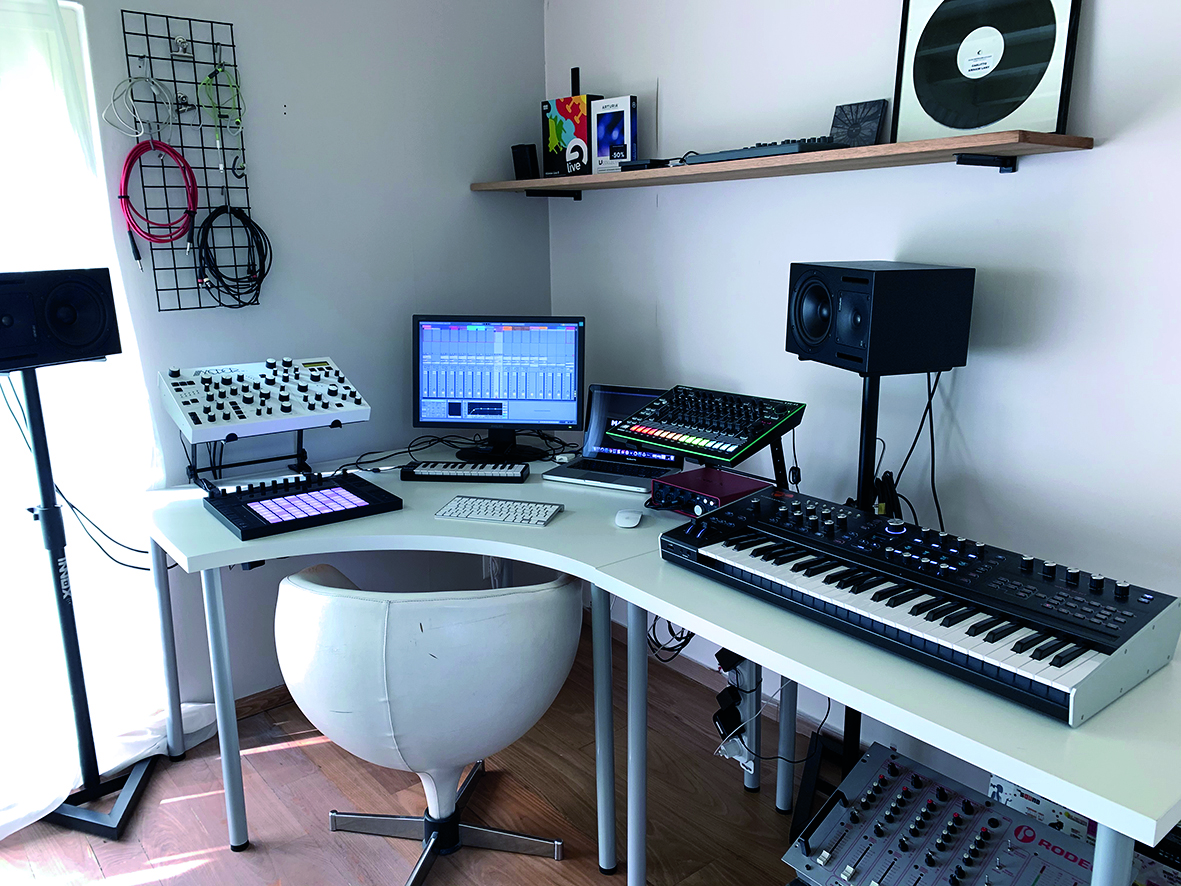
This was an example of myself adding layers on layers on layers, and at the end, I didn’t know what was going on.
Your music is a lot about timing as well. How do you introduce groove into your tracks?
“I was initially just a DJ back in the day; I have no musical education, which was really hard at first. I was in the studio a lot with people who played instruments like drums and piano. They were always arguing with me, like ‘you’re doing everything wrong!’.
“Eventually I said, ‘look, this is how I want to do it’. I always start out with my own project, which is full of mistakes. I noticed that when I was doing the keys, there was a natural swing on it because I don’t know how to play the keys!
"I was liberated by this, and I turned this ‘negative aspect’ to my advantage. I don’t need an extra shuffle because then it would be totally off, but with this natural shuffle, you don’t need to correct too much.
I was in the studio a lot with people who played instruments like drums and piano. They were always arguing with me, like ‘you’re doing everything wrong!’
“I learned one trick from David August back in the day; he was explaining in a video that he makes a choice on each track – he chooses to have all the beats strictly 4/4 and then the melody a little bit off, or he chooses to have the melody really straight, and then the kicks and everything a bit off. I took this advice with me, and a few years later, I really began to understand what he meant.
"For example, on one of my tracks, Renaissance (above), the stab is going over the bars in this weird pattern, so maybe it’s not ‘correct’, but if all the other aspects are on the grid, then it’s fine. If the stabs and the beats are off then I don’t know what it would be!”
Creating a bass groove in Live
Maxim uses a combination of software and hardware synths in Ableton Live to create an infectious bass groove.
01> EQ Eight
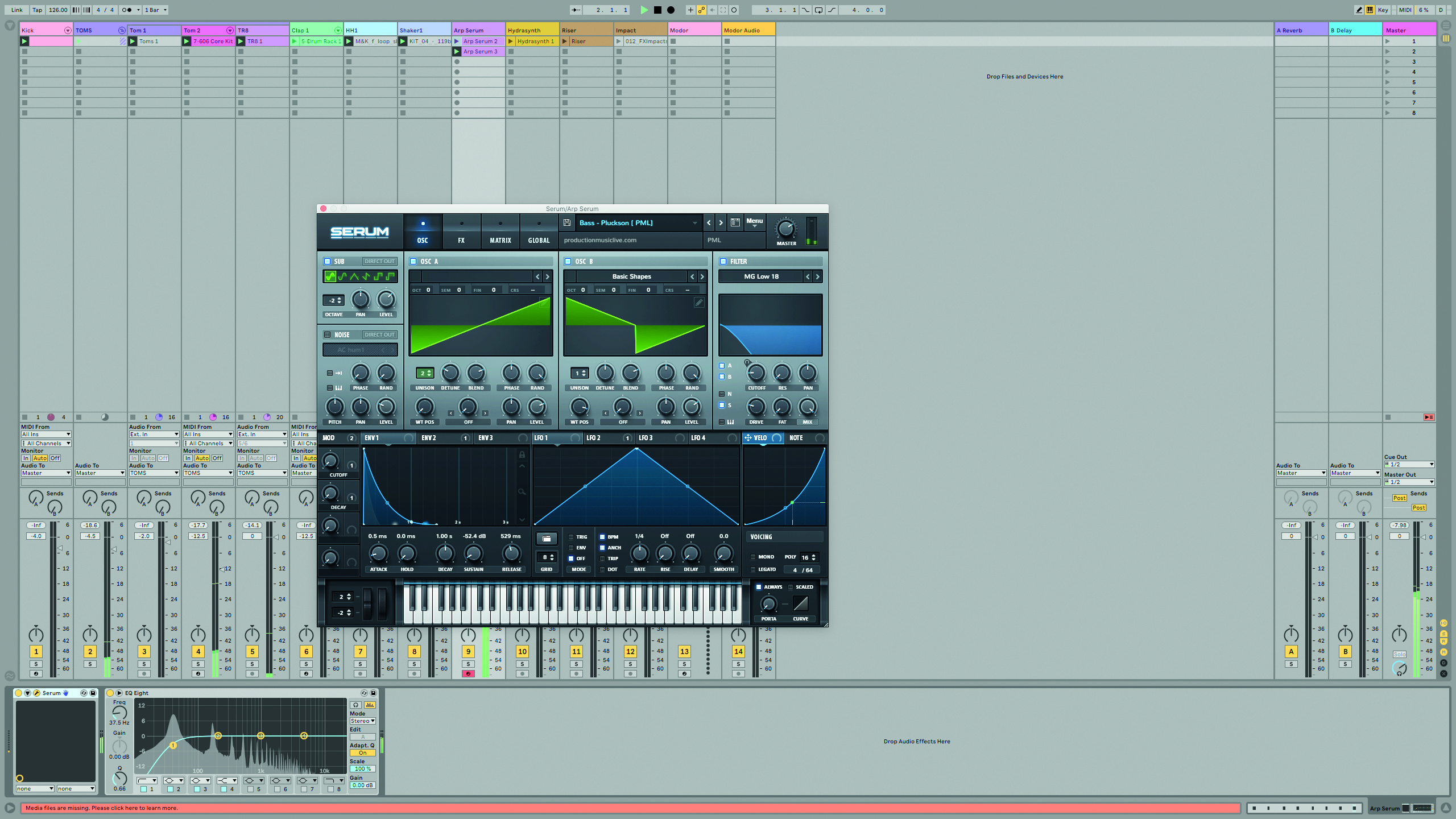
Once his beat has been created, Maxim brings up an instance of Serum with a simple acid bass sound, based around low-pass filtered saw oscillators. He uses EQ Eight to hi-pass the sub 40Hz region to take out unwanted low-end.
02> Arpeggiator
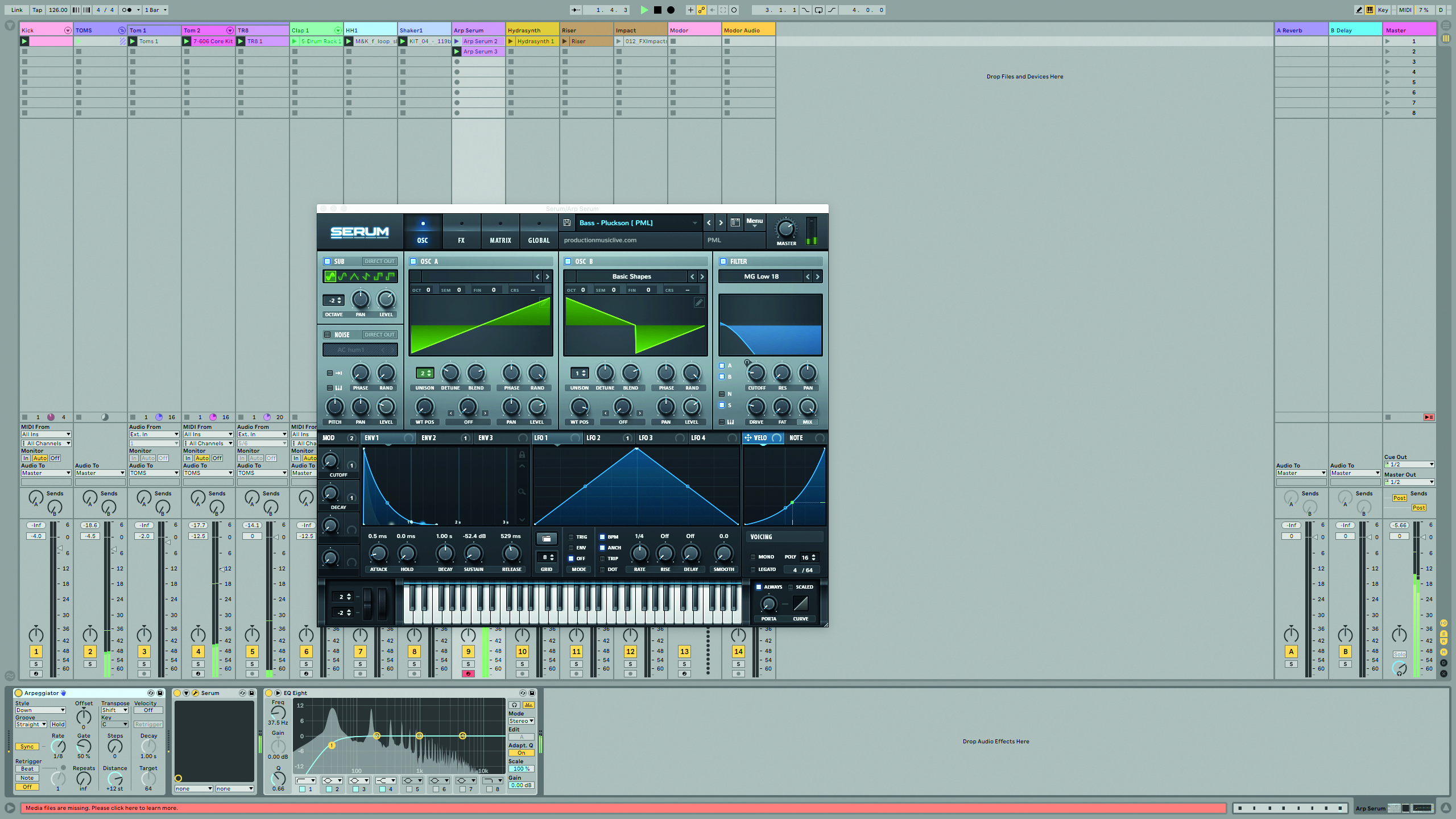
Maxim also adds Live’s Arpeggiator MIDI effect to the track. “I like to work with my mistakes!” he enthuses. “Having an arpeggiator here might seem strange, but when I trigger it from the Push with a harder press it plays the arpeggiator, and that helps me go further in my creativity.”
03> ASM Hydrasynth
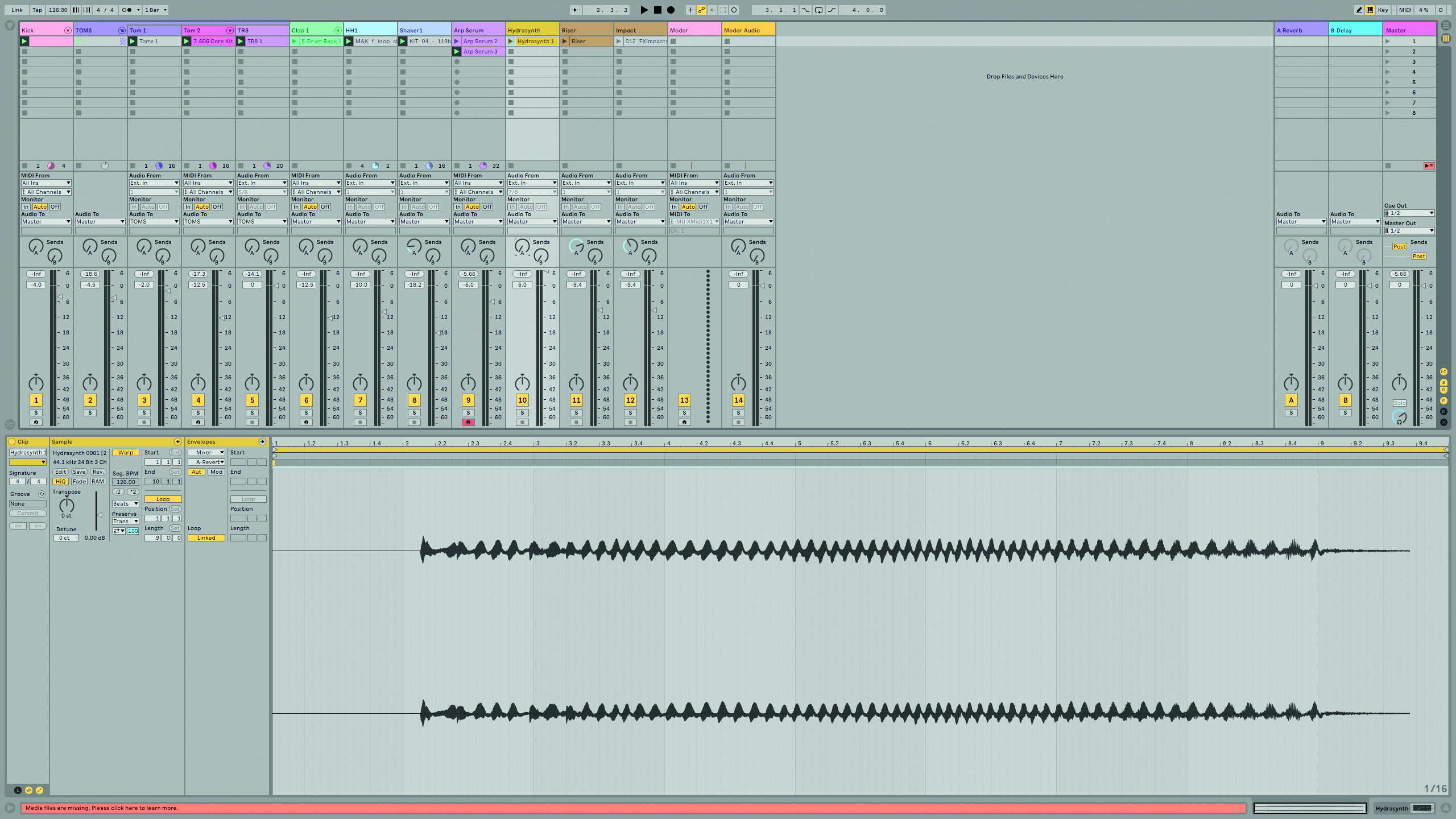
Next Maxim turns to his ASM Hydrasynth to add some extra flavour to the track, experimenting with the instrument’s touch pad to create a descending rhythmic groove. He records the results onto an audio track in Ableton Live.
04> Return
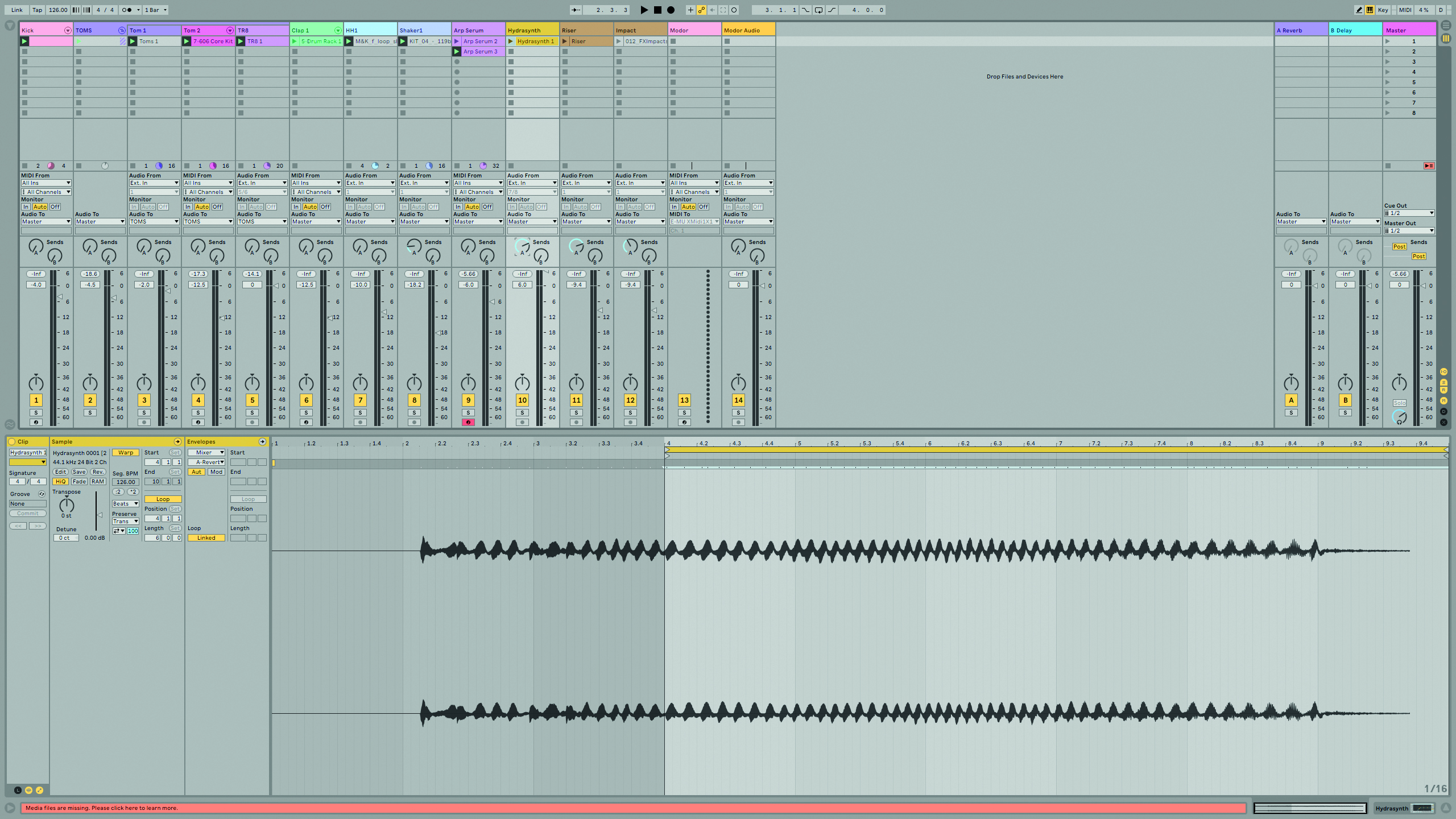
When the audio has been recorded into Live, Maxim experiments with the start point of the audio clip until he gets a result he’s happy with. To spice up the sound he adds a touch of lengthy reverb via one of Live’s return tracks.


Future Music is the number one magazine for today's producers. Packed with technique and technology we'll help you make great new music. All-access artist interviews, in-depth gear reviews, essential production tutorials and much more. Every marvellous monthly edition features reliable reviews of the latest and greatest hardware and software technology and techniques, unparalleled advice, in-depth interviews, sensational free samples and so much more to improve the experience and outcome of your music-making.
